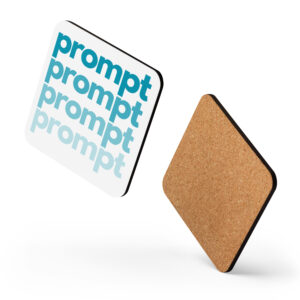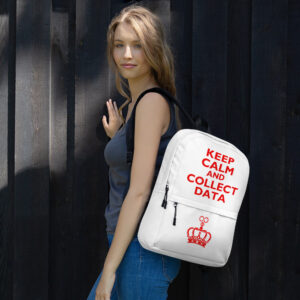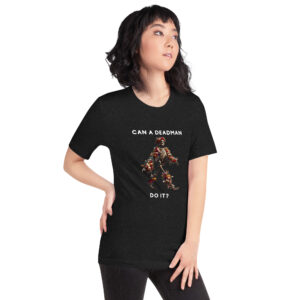Preference Assessments
Table of Contents
Welcome back to our RBT Competency Assessment blog post series! In this post we will be cover task number four and the rbt competency assessment: preference assessments. In this series, we’re diving into each task on the RBT Competency Assessment to help new Behavior Technicians (BTs) prepare for their initial competency assessments and provide a valuable refresher for Registered Behavior Technicians (RBTs) renewing their certification.
In the field of Applied Behavior Analysis (ABA), understanding a client’s preferences is crucial for developing effective and personalized intervention plans. Preference assessments are essential tools used to identify items, activities, or stimuli that are motivating and reinforcing for clients. By determining what a client prefers, behavior analysts and RBTs can create more engaging and effective interventions, ultimately enhancing the client’s motivation and overall treatment outcomes.
In this blog post, we will explore what preference assessments are, why they are important, and how they are used in ABA. We will also delve into the different types of preference assessments, including single item presentation, paired choice, multiple stimuli with replacement (MSW), and multiple stimuli without replacement (MSWO). Each type will be explained with real-world examples that RBTs may encounter in their practice.
By mastering preference assessments, RBTs can significantly improve their ability to tailor interventions to individual client needs, ensuring that therapy is both enjoyable and effective. Let’s begin by defining preference assessments and discussing their role in ABA.
What are Preference Assessments?
Definition and Explanation:
Preference assessments are systematic methods used in Applied Behavior Analysis (ABA) to identify items, activities, or stimuli that are preferred by a client and can be used as potential reinforcers. These assessments help determine what motivates a client, which is essential for designing effective intervention plans. By identifying preferences, behavior analysts and RBTs can use these preferred items or activities to reinforce desired behaviors, thereby increasing the likelihood of those behaviors occurring in the future.
Role in ABA:
Preference assessments play a crucial role in ABA by providing insight into what a client finds motivating and rewarding. This information is used to tailor interventions to the individual’s unique preferences, making therapy sessions more engaging and effective. Knowing what a client prefers allows behavior analysts to use these preferences strategically to encourage positive behaviors and reduce challenging behaviors.

Why are Preference Assessments Important?
Benefits of Conducting Preference Assessments:
- Enhancing Motivation: By identifying and using preferred items or activities, RBTs can significantly enhance a client’s motivation to participate in therapy sessions. This increased motivation leads to more effective learning and skill acquisition.
- Personalizing Interventions: Preference assessments allow for the customization of intervention plans based on what the client finds reinforcing. This personalization ensures that interventions are more likely to be successful because they are tailored to the client’s specific likes and dislikes.
- Improving Client Engagement: Clients are more likely to engage in therapy activities that involve their preferred items or activities. This increased engagement results in more productive therapy sessions and better overall outcomes.
- Data-Driven Decision Making: Conducting preference assessments provides objective data on a client’s likes and dislikes. This data helps behavior analysts make informed decisions about which reinforcers to use, ensuring that interventions are based on evidence rather than guesswork.
Impact on Client Motivation and Engagement:
The use of preferred items or activities as reinforcers has a direct impact on a client’s motivation and engagement in therapy. When clients are motivated by what they like, they are more likely to participate actively and put forth effort in learning new skills. This positive engagement leads to more effective behavior change and skill development, ultimately improving the client’s overall quality of life.
By incorporating preference assessments into their practice, RBTs can create a more positive and effective therapeutic environment, leading to better outcomes for their clients.
Types of Preference Assessments
In ABA, there are several types of preference assessments that RBTs can use to identify what items, activities, or stimuli a client prefers. These include single item presentation, paired choice, multiple stimuli with replacement (MSW), and multiple stimuli without replacement (MSWO). Each method has its own procedures and applications.
Single Item Presentation
Definition and Explanation:
Single item presentation involves presenting one item to the client at a time and recording their reaction to it. This method helps determine whether the client shows interest in the item and how strong their preference is.
Example in ABA:
An RBT might present a child with a toy car and observe whether the child reaches for it, plays with it, or shows signs of enjoyment. The RBT records the child’s reaction and then presents another item, such as a ball, repeating the process. This method is straightforward and useful for clients who have difficulty making choices.
Paired Choice
Definition and Explanation:
Paired choice, also known as forced-choice, involves presenting two items simultaneously and asking the client to choose one. The item chosen is considered more preferred. This process is repeated with various pairs of items to determine a hierarchy of preferences.
Real-World Example:
An RBT might present a child with two items, such as a cookie and a piece of fruit, and ask them to choose one. The RBT records which item the child selects. By presenting multiple pairs of items in this manner, the RBT can identify the child’s most and least preferred items.
Multiple Stimuli with Replacement (MSW)
Definition and Explanation:
Multiple stimuli with replacement (MSW) involves presenting multiple items to the client and allowing them to choose one. After the client makes a choice, the selected item is returned to the array, and the process is repeated. This method helps identify consistently preferred items.
Real-World Example:
An RBT might place several toys in front of a child and ask them to pick one. If the child selects a toy car, the RBT notes the choice and then returns the toy car to the array along with the other toys. This process is repeated to see if the child consistently chooses the same item.
Multiple Stimuli without Replacement (MSWO)
Definition and Explanation:
Multiple stimuli without replacement (MSWO) involves presenting multiple items to the client and allowing them to choose one. After the client makes a choice, the selected item is removed from the array, and the process is repeated with the remaining items. This method helps establish a preference ranking.
Real-World Example:
An RBT might present a child with an array of five toys and ask them to choose one. If the child selects a toy car, the RBT removes the toy car and asks the child to choose from the remaining four toys. This process continues until all items have been chosen, allowing the RBT to rank the child’s preferences.
By understanding and utilizing these different types of preference assessments, RBTs can accurately identify what motivates their clients. This knowledge is crucial for developing effective and engaging intervention plans that are tailored to the individual needs and preferences of each client. It’s important to note that preference assessment should always be done with the same type of item, for example, toys with toys and edibles with edibles.
FAQ on Preference Assessments in ABA
- Q: What is the best preference assessment?
- A: The best preference assessment depends on the individual client and the specific context. Single item presentations are great for clients who have difficulty making choices, while paired choice assessments provide a clear hierarchy of preferences. Multiple stimuli with replacement (MSW) and multiple stimuli without replacement (MSWO) are useful for assessing preferences among several items quickly. Each method has its own strengths and is chosen based on the client’s abilities and the goals of the assessment.
- Q: What is an example of a single stimulus preference assessment?
- A: In a single stimulus preference assessment, an item is presented to the client, and their reaction is observed and recorded. For example, an RBT might present a toy car to a child and note whether the child reaches for it, plays with it, or shows interest. This process is repeated with different items to determine which ones the client prefers.
- Q: What is preference vs. reinforcement assessment?
- A: Preference assessments identify items or activities that a client likes or prefers, which can be used as potential reinforcers. Reinforcement assessments, on the other hand, evaluate whether those preferred items or activities actually function as reinforcers by increasing the likelihood of a behavior occurring in the future. Essentially, preference assessments find potential reinforcers, while reinforcement assessments confirm their effectiveness.
- Q: What is an example of a free operant preference assessment?
- A: In a free operant preference assessment, the client is given free access to a variety of items or activities, and their interactions with these options are observed over a set period. For example, an RBT might place several toys in a play area and allow the child to interact with any of them freely. The RBT records the duration and frequency of interactions with each item to identify the most preferred ones.
Final Thoughts
Preference assessments are essential tools in Applied Behavior Analysis (ABA) that help identify what motivates clients, ensuring interventions are tailored to their unique preferences. By using different types of preference assessments—such as single item presentation, paired choice, multiple stimuli with replacement (MSW), and multiple stimuli without replacement (MSWO)—RBTs can effectively determine what items or activities will serve as effective reinforcers.
Understanding and mastering these techniques allows RBTs to create engaging and effective intervention plans that enhance client motivation, participation, and overall treatment outcomes. By incorporating preference assessments into their practice, RBTs can ensure that therapy sessions are both enjoyable and productive, leading to better progress and success for their clients.
Explore More Resources
If you found this guide on preference assessments helpful, be sure to explore more resources on our website. We offer a wealth of information, including detailed articles, study guides, and practical tips to help you succeed as a Registered Behavior Technician (RBT).
Are you preparing for the RBT competency assessment? Check out our comprehensive study materials and mock exams designed to help you ace the test and become a confident, competent RBT.
Don’t forget to visit our ABA Schwag Shop for unique and fun merchandise! Show your pride in the field with our selection of ABA or RBT-themed shirts, mugs, and more.
For more information on becoming a Registered Behavior Technician and for the latest research and resources in Applied Behavior Analysis, visit the Behavior Analyst Certification Board (BACB) website.
Share this blog with your peers and colleagues to spread the knowledge and support the ABA community!



